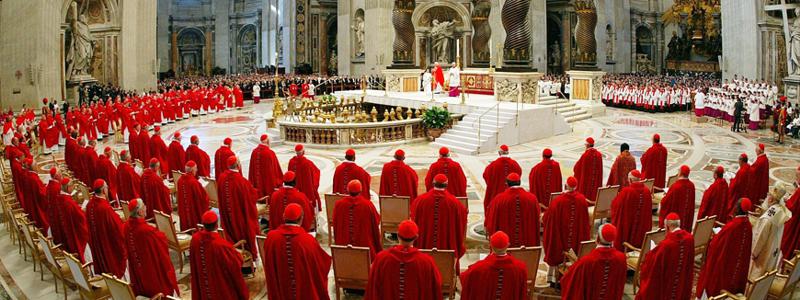In the world of the Roman Catholic Church, the appointment of cardinals plays a critical role in shaping the future leadership and direction of the faith. Pope Francis, since his election in 2013, has not only exercised this power to select cardinals but has strategically altered the geographical balance of power within the College of Cardinals, moving it away from its traditional European stronghold and toward regions in Africa, Asia, and Latin America.
In late September, a momentous ceremony will unfold in Vatican City as 18 new voting cardinals are installed. This event marks a pivotal moment in the composition of the College of Cardinals, which will soon have 136 members under the age of 80, eligible to participate in the election of the next pope. A comparison of the regional distribution of voting cardinals reveals the transformation that has occurred since Pope Francis assumed his role a decade ago:
– The Asia-Pacific region’s share of voting-age cardinals will rise from 9% in 2013 to 18%.
– The Latin American-Caribbean region will experience a modest increase from 16% to 18%.
– Sub-Saharan Africa will see its representation grow from 9% to 13%.
– Europe’s presence will significantly decline from 52% to 39%.
– North America’s influence will diminish slightly, falling from 12% to 10%.
– The Middle East-North Africa region will have the smallest share, decreasing from 2% to 1%.
It’s worth noting that this count of 136 voting cardinals excludes Patrick D’Rozario, who has held his cardinal position since 2016 but turns 80 just one day after the upcoming September 30th ceremony.
Analyzing Pope Francis’ Cardinal Selections Over Time
Despite these significant shifts, Pope Francis, an Argentine and the first non-European pope since the eighth century, has still appointed more cardinals from Europe than any other region. Among the 98 voting-age cardinals named by Francis during his papacy (including the 18 cardinals-elect), the breakdown is as follows:
– Europe holds the majority with 38%.
– Latin America and the Caribbean represent 20%.
– The Asia-Pacific region comprises 19%.
– Sub-Saharan Africa contributes 13%.
– North America has 7%.
– The Middle East-North Africa region accounts for 2%.
Collectively, cardinals selected by Pope Francis will constitute a substantial 72% majority among the 136 voting members of the College of Cardinals after the September 30th ceremony. The remainder were appointed by Pope Benedict XVI and St. John Paul II.
Taking a closer look at the geographical origins of the new 18 voting-age cardinals to be installed on September 30th reveals a diverse composition:
– Nine cardinals will represent European countries, including France (2 cardinals-elect), Italy (2), Spain (2), Poland (1), Portugal (1), and Switzerland (1).
– Four cardinals will hail from Latin America and Caribbean nations, including Argentina (2), Colombia (1), and Peru (1).
– Three cardinals will represent countries in sub-Saharan Africa: South Africa, South Sudan, and Tanzania.
– Two cardinals will come from Asia-Pacific countries: China and Malaysia.
Cardinals and the Global Catholic Population
 Vatican data from 2021 indicates that Europe is home to 21% of the global Catholic population. Despite this proportion, Europe remains significantly overrepresented among voting cardinals, constituting 39% of their ranks. In contrast, the Latin America-Caribbean region, which accounted for 41% of the worldwide Catholic population as of 2021, possesses only 18% of the voting cardinals. This disparity underscores the evolving dynamics within the Catholic Church’s leadership structure, influenced by Pope Francis’ strategic selection of cardinals.
Vatican data from 2021 indicates that Europe is home to 21% of the global Catholic population. Despite this proportion, Europe remains significantly overrepresented among voting cardinals, constituting 39% of their ranks. In contrast, the Latin America-Caribbean region, which accounted for 41% of the worldwide Catholic population as of 2021, possesses only 18% of the voting cardinals. This disparity underscores the evolving dynamics within the Catholic Church’s leadership structure, influenced by Pope Francis’ strategic selection of cardinals.
Pope Francis’ efforts to shift the balance of power within the College of Cardinals reflect a broader vision of inclusivity and representation, acknowledging the growing significance of regions outside Europe in the global Catholic community. As these changes continue to take root, they are likely to have a lasting impact on the future leadership and direction of the Roman Catholic Church.
